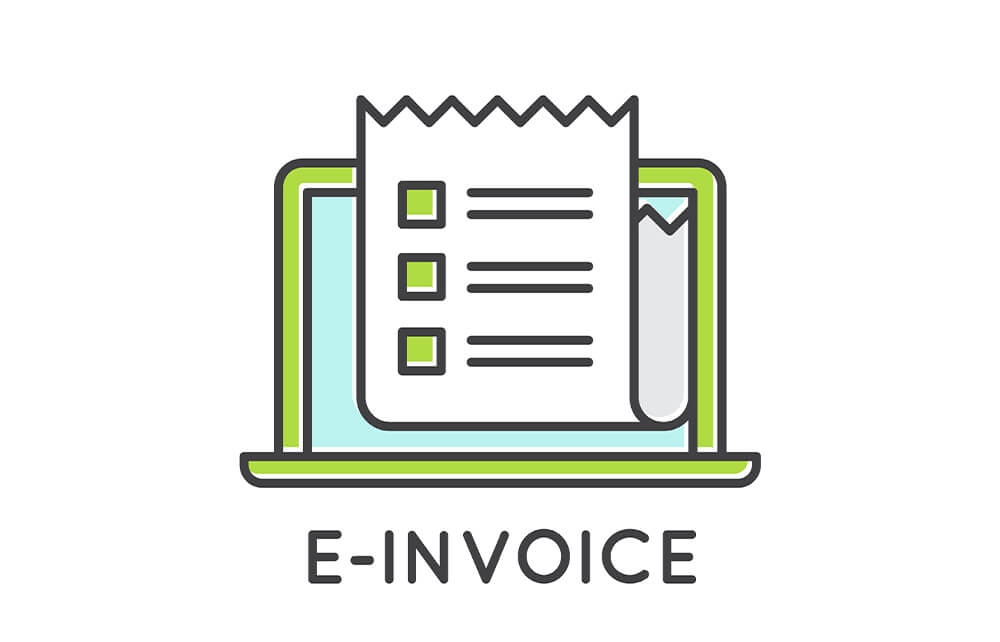Mandatory GST e-invoicing for taxpayers exceeds threshold limit of INR 5 crore

Mandatory GST e-invoicing for taxpayers exceeds threshold limit of INR 5 crore
The Central Board of Indirect Taxes and Customs (CBIC) has released Notification No. 10/2023 – Central Tax, dated May 10, 2023, introducing a new turnover limit for GST e-invoicing for all businesses engaging in B2B transactions. As per the latest amendment in August 2023, all GST-registered businesses with an annual turnover exceeding Rs. 5 crores must generate e-invoices. This threshold was Rs. 10 crores before the amendment. The move aims to further the government’s efforts to promote digitization and facilitate the ease of doing business. This article delves into the implications of the new policy and explores its key features and potential impact on companies across India.
Understanding the E-Invoicing System
Electronic invoicing, or e-invoicing, refers to the generation, sharing, and storage of invoices in electronic form. It eliminates the need for physical invoices and facilitates the seamless exchange of invoice data between businesses and tax authorities.
The e-invoicing system in India operates through the GST Network (GSTN) platform. The GSTN acts as the central hub for processing and validating invoices. It allows businesses to generate standardized electronic invoices in the specified format.
The Need for E-Invoicing
E-invoicing has gained momentum globally as a reliable and efficient method of generating, sharing, and storing invoices electronically. By digitizing invoicing processes, businesses can eliminate manual errors, reduce processing costs, and ensure accurate and consistent data entry.
The e-invoicing system enhances compliance by recording transactions electronically, reducing the scope for tax evasion. It also fosters transparency by enabling real-time invoice exchange and quicker resolution of discrepancies. It helps promote seamless data integration among various stakeholders.
Additionally, expanding the e-invoicing system will contribute to the government’s broader agenda of creating a digital economy. By encouraging businesses to adopt electronic invoicing, the government aims to reduce the dependency on paper-based processes and promote sustainable practices.
Moreover, implementing e-invoicing will align Indian businesses with global standards and practices. Many countries have already adopted electronic invoicing as a mandatory requirement. India’s move towards e-invoicing demonstrates its commitment to staying abreast of international business trends and fostering a favourable investment climate. This alignment will facilitate smoother trade interactions with international partners and enhance India’s competitiveness in the global marketplace.
Recognizing these benefits, the Indian government introduced the e-invoicing system in October 2020 for businesses with an annual aggregate turnover exceeding INR 500 crore.
Key Features of the E-Invoicing System
- Unique Invoice Reference Number (IRN): Each e-invoice generated under the system is assigned a unique IRN. The IRN serves as a digital identifier for that invoice. Uploading invoice details to the GSTN platform will help generate the IRN. The platform then validates and generates the IRN along with a digitally signed QR code.
- QR Code: The QR code contains essential details of the invoice. Scanning the QR code can help verify the authenticity and integrity of the invoice. It enables quick and easy validation by businesses, tax authorities, and other stakeholders.
- Real-Time Reporting: E-invoices are reported to the GSTN platform in real-time, allowing seamless integration with the GST system. This ensures that invoice data is readily available to tax authorities for verification and compliance purposes.
Previous Turnover Limit – Mandatory E-invoice for businesses with the above Rs.10 Crore Turnover
During the fifth phase, the previous turnover limit for mandatory e-invoicing under GST in India was set at INR 10 crore on October 1, 2022. This means that businesses with an annual aggregate turnover exceeding INR 10 crore must generate and report their invoices electronically using the e-invoicing system. All enterprises with an annual turnover exceeding INR 10 crore must create e-invoices for all B2B transactions.
For your information, the initial phase, launched on October 1, 2020, targeted businesses with an e-invoice turnover exceeding Rs. 500 crores. Subsequently, the second phase, commencing on January 1, 2021, extended the requirement to companies with revenues above Rs. 100 crores. The third phase, initiated on April 1, 2021, encompassed businesses with turnovers exceeding Rs. 50 crores. As part of the fourth phase, set to begin on April 1, 2022, the government expanded the electronic invoicing system to include Indian businesses with e-invoice limits ranging from Rs. 20 crores to Rs. 50 crores.
Revised Turnover Limit
To further expand the scope of e-invoicing and enable more businesses to leverage its advantages, CBIC has revised the turnover limit. Effective August 1, 2023, the new turnover limit for mandatory e-invoicing will be INR 5 crore. Businesses whose annual turnover exceeds INR 5 crore must use the e-invoicing system for business-to-business (B2B) supply of goods/services and exports.
In conclusion, introducing a new turnover limit for e-invoicing by the CBIC is a significant step towards digitizing India’s invoicing processes. the government aims to promote transparency, enhance compliance, and improve business efficiency.
The move will bring numerous benefits to businesses, including increased accuracy, improved cash flow management, cost savings, stronger business relationships, and data-driven insights. As the e-invoicing ecosystem evolves, companies must adapt and embrace this digital transformation for long-term success in a rapidly changing business environment.

